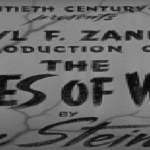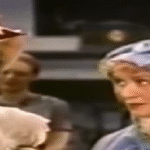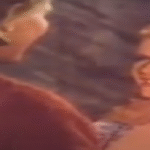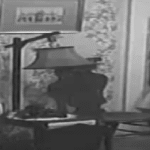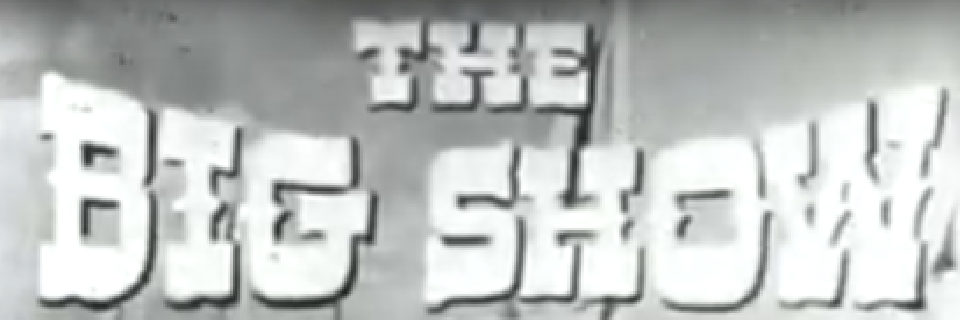The Big Show is a 1936 American musical western film that blends romance, comedy and action within the vibrant world of a travelling rodeo. Directed by Mack V. Wright and starring Gene Autry, the picture makes creative use of mistaken identity and show business spectacle to tell a story that is equal parts heartwarming and entertaining, reflective of the era’s cinematic style and the cultural appetite for light-hearted escapism during the Great Depression.
Set primarily at the Texas Centennial Exposition in Dallas, the film introduces us to Gene Autry, a humble singing cowboy who works as a stunt double for a popular Western film star, Tom Ford. Ford, played by Autry in a dual role, is famous for his dashing good looks and tough guy persona, but in truth, he is arrogant, self-absorbed and utterly lacking in talent. When Ford refuses to make a personal appearance at the exposition to promote his new film, the studio’s desperate publicity team seizes upon an idea: send Gene in his place. With little choice, Gene agrees to impersonate the actor, leading to a cascade of complications and comedic situations.
As Gene steps into Ford’s polished boots, he finds himself caught in a whirlwind of public attention, showbiz politics and romantic entanglements. His natural charm and down-to-earth manner quickly win the affection of the crowd, but he also draws the interest of Marion Hill, a sharp and independent-minded reporter who is both intrigued and sceptical. Marion is not easily impressed by Hollywood types, and she begins to suspect that there is more to “Tom Ford” than meets the eye. Meanwhile, Gene struggles to maintain the charade, especially as his own musical talents and genuine personality begin to shine through, raising the risk of exposure.
Much of the film’s appeal comes from the contrast between Gene’s modest cowboy values and the flashy, sometimes shallow world of the film industry and high society. As Gene navigates these two worlds, he becomes the embodiment of the American ideal — honest, hardworking and kind-hearted — a characterisation that helped cement Autry’s reputation as one of the first true singing cowboys of the silver screen. His musical performances are woven naturally into the narrative, offering both entertainment and emotional depth. Songs like “The West Ain’t What It Used to Be” and “Song of the Saddle” reflect the character’s nostalgia for a simpler life and provide poignant commentary on the changing nature of the American West.
The film is also notable for its colourful depiction of the Texas Centennial Exposition, which had taken place earlier that year to celebrate 100 years of Texas independence. With on-location filming, audiences were treated to a visual showcase of the fair’s exhibitions, architecture and carnival atmosphere, lending the film an authenticity and vibrancy that went beyond the usual studio sets. The exposition acts as more than just a backdrop; it becomes a character in its own right, symbolising progress, celebration and the enduring appeal of spectacle in American culture.
Supporting characters contribute significantly to the film’s charm and momentum. Smiley Burnette plays Frog, Gene’s loyal sidekick, bringing his trademark brand of slapstick humour and musical interludes that serve as comic relief. Burnette’s presence helps to balance the romantic and dramatic elements, ensuring the film never becomes too heavy or self-important. Other memorable roles include the conniving film executives and the brash promoter who sees Gene as a ticket to fame, each of them offering a satirical glimpse into the mechanics of the entertainment industry.
The romantic subplot between Gene and Marion unfolds with a gentle, old-fashioned grace. There is a clear chemistry between the leads, but their relationship is built on mutual respect and gradual understanding, rather than the more forceful romance often seen in modern cinema. Marion’s initial suspicion slowly gives way to admiration, particularly when she realises that Gene’s kindness and sincerity are not part of the act, but his true nature. Her discovery of his real identity forms one of the emotional climaxes of the film, posing the question of whether she can forgive the deception and accept the man behind the myth.
As the film approaches its conclusion, the tension between illusion and reality comes to a head. Ford returns unexpectedly, furious at being impersonated, and demands that Gene be exposed. A showdown seems inevitable, but Gene’s popularity with the crowd and his authentic musical talent have made him a star in his own right. The public’s response becomes a decisive force, underlining one of the film’s central themes: that authenticity will always outshine artifice, and that the public, while easily swayed by glamour, ultimately values truth.
The finale is suitably grand, taking place during a major rodeo event that combines action, music and resolution in classic Hollywood fashion. Gene proves himself not just as a performer, but as a genuine hero, handling the rodeo challenges with skill and courage. The climax reinforces the message that the cowboy ideal — symbolising honour, bravery and self-reliance — still has a place in the modern world, even amid the glitz and glamour of show business.
In its modest, cheerful way, The Big Show encapsulates the spirit of 1930s American cinema. It is a film that does not take itself too seriously, yet delivers sincere messages about identity, integrity and the value of staying true to oneself. While the plot relies on familiar tropes and coincidences, the charm lies in its execution — in the easy charisma of Gene Autry, the nostalgic portrayal of Western values, and the lively musical numbers that offer both joy and reflection.
Though not groundbreaking in terms of cinematic technique or storytelling innovation, The Big Show remains a significant entry in the singing cowboy genre. It showcases Gene Autry at a pivotal moment in his career, blending music, romance and rodeo in a way that appealed to Depression-era audiences seeking hope and entertainment. Today, it stands as a nostalgic reminder of a bygone era, where the line between fiction and reality could be blurred in the name of showmanship, but where the hero’s heart remained steadfastly true.

